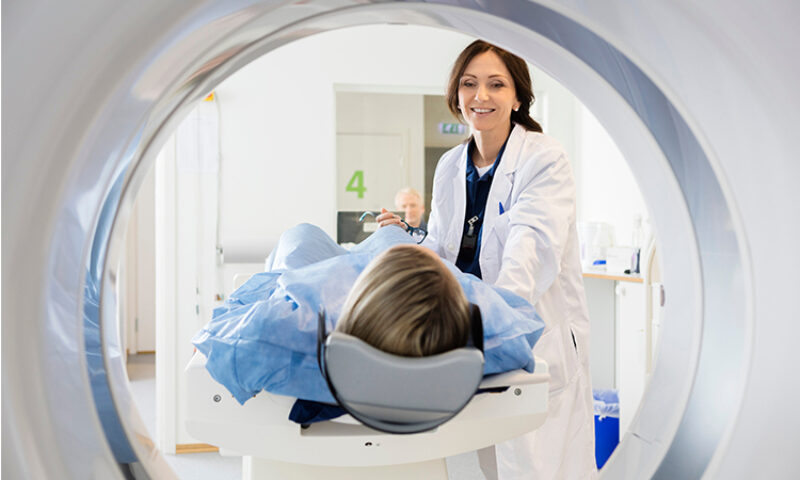
Heat Stroke
Heat stroke is a severe but preventable medical condition that can occur quickly in hot weather. Learn more.
What Is Heat Stroke?
Heat stroke, also known as hyperthermia, is when the body overheats to temperatures of 104 F or higher. It is usually the result of prolonged exposure to high heat paired with dehydration. Additionally, it is considered the most serious form of heat injury and requires immediate medical attention and emergency treatment.
If gone untreated, heat stroke can cause significant complications in the body such as damage to the brain or other internal organs. In more severe cases, it can lead to coma or death. While individuals over 50 are most susceptible to heat stroke, it can affect people of any age. Fortunately, there are precautions you can take to avoid heat stroke. Additionally, in the event of an emergency, Schneck is here to ensure your health and safety.
Signs of Heat Stroke
While heat stroke can come on very quickly, warning signs typically appear ahead of time. If you or someone you're with is experiencing any of the following symptoms, call your medical provider immediately.
- 104 °F or higher body temperature
- Throbbing headache
- Dizziness or feeling faint
- Flushed, red, and dry skin
- Nausea and vomiting
- Slurred speech or delirium
- Confusion or irritability
- Shallow, rapid breath
- Racing heart rate
- Muscle weakness
- Unconsciousness
What Causes Heat Stroke?
Our bodies naturally cool by sweating and releasing heat through the skin. However, when exposed to high heat levels through strenuous activity in the hot sun or time in high humidity, the body may fail to regulate its temperatures. As a result, heat will build up and become dangerous.
While anyone can get heat stroke, you may be at a higher risk if you are dehydrated, have an electrolyte imbalance, are over the age of 50, frequently work or play sports in the sun, have a medical condition that impacts your ability to sweat, have a previous history of heat stroke, drink alcohol, or take specific medications including vasoconstrictors, beta-blockers, stimulants, diuretics, or antidepressants.
How Is Heat Stroke Diagnosed?
To diagnose heat stroke, your doctor will perform a series of tests to check for high body temperature and potential causes in the hospital’s emergency unit. These tests could include a CT scan of the head, blood test, spinal tap, urine test, and blood test. The last two are utilized to see how the kidneys are functioning because heat stroke can cause damage to the internal organs. Other tests could include a chest X-ray or electrocardiogram to monitor the heart’s performance.

How to Prevent and Treat Heat Stroke
Prevention
Most of the time, heat stroke can be prevented. Here is a list of recommended precautions when you know that outdoor temperatures will be high.
- Combat sunburn with broad-spectrum sunscreen, a sun hat, and loose-fitting, lightweight clothing.
- Stay hydrated by drinking lots of fluids. Opting for electrolytes is especially helpful.
- Be aware of medications that may cause dehydration or affect your ability to regulate body temperature.
- Avoid spending long periods in a hot car, and do not leave pets, children, or other individuals in the car.
- Avoid strenuous activity during the hottest parts of the day.
- If you need to spend time in hot weather, acclimate to it by gradually building the amount of time and work performed outside until your body adjusts.
- During heat waves, stay in air-conditioned or well-ventilated spaces.
Treatment
A heat stroke requires immediate medical help. If someone you know is experiencing any of the symptoms listed above, call 911. In the meantime, you can take fast action to support the individual by:
- Moving them into the shade or an air-conditioned indoor space if possible
- Removing excess clothing to prevent trapping the heat in
- Immersing them in cool water
- Applying cold water to the neck, groin, and armpits with ice packs or a wet cloth
- Avoiding giving them any medications
Once at the hospital, the affected individual will receive cooled IV fluids to quickly reduce dehydration. The medical provider will also work to rapidly reduce body temperature by performing the same steps above. In some cases, the patient may receive anti-seizure or muscle-relaxing medications. Once in a normal state, the patient may also receive tests for complications or damage to the organs. If that is the case, then further treatment may be required.
Make Sure You’re Prepared
If your lifestyle requires you to spend long hours in the hot sun, such as for work or sports, we can help make sure you’re fully prepared to acclimate to hot environments and prevent heat stroke from occurring.
Your Providers
The expert providers in Schneck Emergency Services are here to help ensure your health and safety in the event of an emergency.

Krista Grow, MD
Emergency Medicine View Info »
Rachel Hoevener, FNP-C
Pediatrics View Info »
Frank J. Pangallo, MD
Emergency Medicine View Info »
